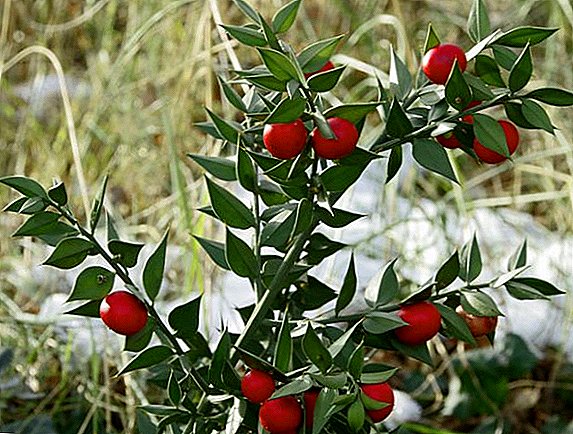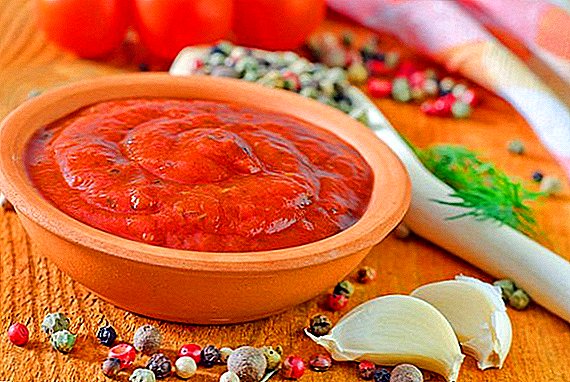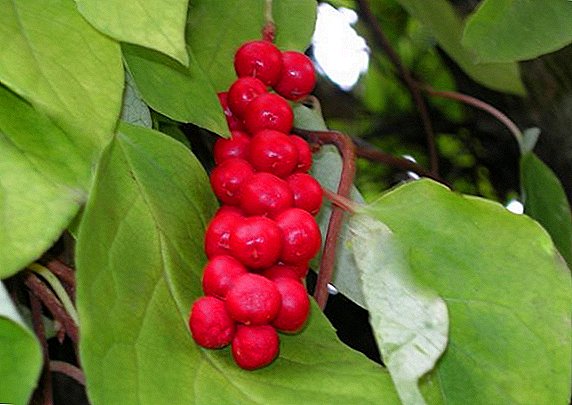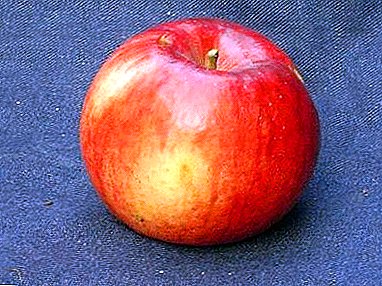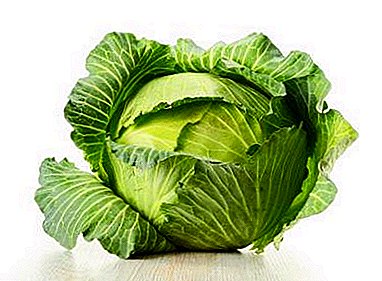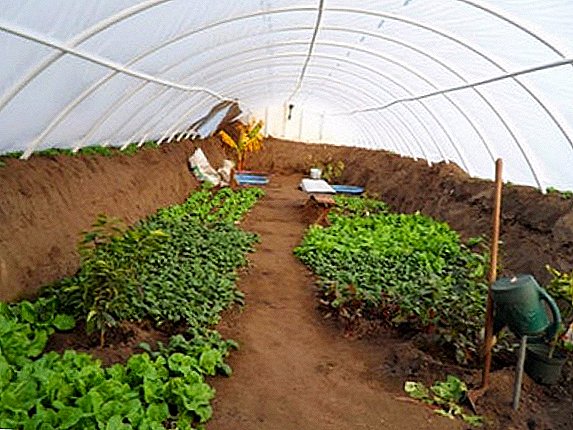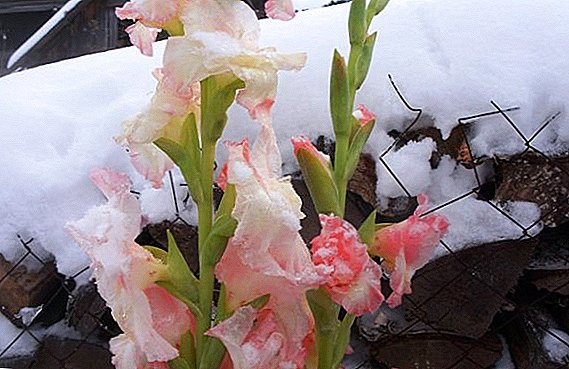 At first glance, planting gladioli in the harsh climate of Siberia may seem a bit fantastic.
At first glance, planting gladioli in the harsh climate of Siberia may seem a bit fantastic.
But there is nothing possible, and knowing some nuances, these thermophilic flowers can be successfully grown even in such difficult conditions.
Learn all the secrets of agrotechnics that concern the planting of gladioli in this region.
When planting gladioli in Siberia in the spring
The planting dates of these flowers are directly dependent on weather conditions and shift depending on how the spring goes. The soil for planting the bulbs should warm up a little, otherwise the flowering will have to wait a very long time or you can not wait at all, because frosts may come to this region in August.
Therefore, it is considered that planting tubers should be carried out from 1 to 15 May. But you need to navigate according to the weather and weather forecasts, as there are May frosts in Siberia, although rarely enough. The temperature of the soil at a depth of 10 cm at the time of planting the bulbs should not be below +10 degrees. 
Did you know? In antiquity, wild gladiolus bulbs were hung over the entrance to a dwelling to avoid the entrance of evil spirits into the house. It was also believed that the tubers of this plant along with garlic can protect from the evil eye and spoilage.
Choosing a landing site
Of great importance is the place on which gladioli will grow. It should certainly be well lit and sunny. It is desirable that it be protected from wind and drafts.
The ideal soil for planting these flowers is chernozem, but if it is not possible to plant them on fertile soil, loamy and sandy substrates will do.
Preliminary work
The key to success in the cultivation of gladioli in Siberia is properly organized preparatory work. If you follow the recommendations, large and powerful flowers will certainly adorn your garden, even in difficult climatic conditions.
If this is the first acquaintance with gladioli, then you should find out which varieties of gladioli are the best, how to plant and store them, how to care for gladioli, how to grow them in containers.

Soil preparation
Experienced gardeners recommend preparing the soil in the fall. To do this, select the lightest and protected from the wind corner on the site and dig it. Then 15 kg of humus per square meter and 40 g of phosphate-potassium fertilizers per 1 sq. M are applied to the soil.
With the onset of spring, the soil is loosened and nitrogen fertilizing is applied at the rate of 30 g per 1 sq. M. After that, the site is considered prepared for planting flowers.
Preparation of bulbs for planting in the spring
The prepared place is only half of the work done, now you need to prepare the material itself for landing. To this end, in the last days of April or the first days of May, the tubers are taken out of storage and left in a room at room temperature (from +19 to +24 degrees). They must be peeled and inspected for any damage.
Important! Painful and pest-damaged corms must be ruthlessly culleds
 The next mandatory procedure is the disinfection of planting material. For this, the bulbs are placed in a weak solution of potassium permanganate for 24 hours.
The next mandatory procedure is the disinfection of planting material. For this, the bulbs are placed in a weak solution of potassium permanganate for 24 hours.And another secret of successful cultivation of gladioli in this region lies in the fact that 7-10 days before planting in open ground corm is placed on a pallet with wet sacking or some kind of rags - this will give them the opportunity to release the roots, and then quickly take root on garden bed
Learn how to grow potatoes, cherries, juniper, hydrangea, family onions, rhododendron, grapes, tomatoes, raspberries, beets in Siberia.
Landing rules
Depth of planting pits depends on the size of the bulbs:
- small tubers are planted to a depth of 5-7 cm;
- medium ones - by 7-10 cm;
- large - 10-15 cm
 It is advisable to mulch the soil around the plants after planting - this will help retain moisture, and protect the onions from possible cooling.
It is advisable to mulch the soil around the plants after planting - this will help retain moisture, and protect the onions from possible cooling.Important! The more spacious the bed is, the better gladiolus will feel on it, so you should not save space.
Care Tips
Gladiolus care is reduced to a number of simple and clear procedures that should be performed regularly, namely:
- Watering - it should be moderate in the springtime, only as the soil dries, and after 3-4 leaves appear on the plants and flower stalks begin to form, its intensity should be increased. For watering 1 square. m beds should be used about 10-15 liters of water.
- The soil around the plants must be periodically loosened and weed plants removed as they occur. This is necessary both from an aesthetic point of view and for the normal and healthy growth of flowers.
- Fertilizers are also an integral part of plant care. Nitrogen supplements make three times during the growing season:
- 4 weeks after landing;
- after 6 to 8 weeks;
- at the beginning of flowering.
 In order to saturate the soil and provide the necessary dressing for the flowers, 25 - 30 g of nitrogen fertilizer is used for each square meter of bed.
In order to saturate the soil and provide the necessary dressing for the flowers, 25 - 30 g of nitrogen fertilizer is used for each square meter of bed.Did you know? In addition to decorative qualities, gladioli also have healing properties. Their bulbs and foliage are actively used by experts in the field of traditional medicine and claim that with the help of this plant you can eliminate a lot of health problems. For example, to get rid of high temperature or relieve headache and toothache, to improve the work of the kidneys and the gastrointestinal tract.
When to dig and where to store the bulbs in the winter
It's no secret that the bulbs need to have time to mature after flowering, and the warm weather in Siberia does not please with its duration, and winter comes to replace the warm summer. But still, you should not rush to dig up the tubers, if they are deeply planted and covered with a good layer of mulch, they are not afraid of autumn frosts.  Experienced growers recommend digging up corms together with young shoots in these climatic conditions no later than the first days of October - by this time they are ripening, and the earth still does not have time to cool too much. A warm day without precipitation is best for the procedure, since after the bulbs are removed from the soil, it is advisable to dry them in the sun for at least a few hours.
Experienced growers recommend digging up corms together with young shoots in these climatic conditions no later than the first days of October - by this time they are ripening, and the earth still does not have time to cool too much. A warm day without precipitation is best for the procedure, since after the bulbs are removed from the soil, it is advisable to dry them in the sun for at least a few hours.
Then the bulbs are transferred to a warm, well-ventilated room, and stored there until the shoots are completely dry. After 10-14 days, dried leaves are cut, and the tubers are placed in cardboard or wooden boxes. Store in a dark, dry, cool place at a temperature of from 0 to +8 degrees to the new season.
If you are going to decorate the flower garden with different flowers, it is important to know how to grow dahlias, allium, tulips, proleski, daffodils, chionodoksy, lilies, montbretias, licorises, snowdrops, kandyk, crocuses, ixia, zephyranthes.Now you know that it is possible to enjoy the beauty of gladioli even in the harsh climate of Siberia - you only need to properly organize the process of planting, leaving and timely digging up the tubers of the plant, as well as their subsequent storage. This whole process seems difficult only at first glance, but in fact, it does not take much time and labor, especially if you catch it. Yes, and praise in the form of admiring these charming flowers justifies all the difficulties on the way to the goal.
 Gladioli can save you from unexpected weather surprises by planting pots and tubs.
Gladioli can save you from unexpected weather surprises by planting pots and tubs.

